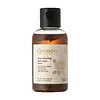What's inside
What's inside
 Key Ingredients
Key Ingredients

 Benefits
Benefits

 Ingredients Side-by-side
Ingredients Side-by-side

Water
Skin ConditioningGlycerin
Humectant1,2-Hexanediol
Skin ConditioningNelumbo Nucifera Flower Extract
Skin ConditioningMadecassoside
AntioxidantPanthenol
Skin ConditioningSchisandra Sphenanthera Fruit Extract
AntioxidantBeta-Glucan
Skin ConditioningXylitol
HumectantCyanocobalamin
Skin ConditioningDipotassium Glycyrrhizate
HumectantAllantoin
Skin ConditioningXylitylglucoside
HumectantAnhydroxylitol
HumectantRosa Damascena Flower Water
MaskingPolyacrylate Crosspolymer-11
Emulsion StabilisingHydroxyacetophenone
AntioxidantSodium Metabisulfite
AntioxidantTrisodium Ethylenediamine Disuccinate
Sodium Benzoate
MaskingPotassium Sorbate
PreservativeCitric Acid
BufferingTromethamine
BufferingWater, Glycerin, 1,2-Hexanediol, Nelumbo Nucifera Flower Extract, Madecassoside, Panthenol, Schisandra Sphenanthera Fruit Extract, Beta-Glucan, Xylitol, Cyanocobalamin, Dipotassium Glycyrrhizate, Allantoin, Xylitylglucoside, Anhydroxylitol, Rosa Damascena Flower Water, Polyacrylate Crosspolymer-11, Hydroxyacetophenone, Sodium Metabisulfite, Trisodium Ethylenediamine Disuccinate, Sodium Benzoate, Potassium Sorbate, Citric Acid, Tromethamine
Water
Skin ConditioningRosa Damascena Flower Water
Masking1,2-Hexanediol
Skin ConditioningButylene Glycol
HumectantSodium Hyaluronate
HumectantBetaine
HumectantGlycine
BufferingAlanine
MaskingHistidine
HumectantValine
MaskingSerine
MaskingProline
Skin ConditioningThreonine
Isoleucine
Skin ConditioningArginine
MaskingPhenylalanine
MaskingSodium PCA
HumectantAspartic Acid
MaskingPCA
HumectantXylitol
HumectantXylitylglucoside
HumectantAnhydroxylitol
HumectantRosa Damascena Flower
Skin ConditioningSaccharide Isomerate
HumectantSodium Gluconate
Skin ConditioningPropanediol
SolventSodium Lactate
BufferingPanthenol
Skin ConditioningPentylene Glycol
Skin ConditioningPolysorbate 20
EmulsifyingXanthan Gum
EmulsifyingEthylhexylglycerin
Skin ConditioningPEG-40 Hydrogenated Castor Oil
EmulsifyingTrisodium Ethylenediamine Disuccinate
Caramel
Cosmetic ColorantPhenoxyethanol
PreservativeWater, Rosa Damascena Flower Water, 1,2-Hexanediol, Butylene Glycol, Sodium Hyaluronate, Betaine, Glycine, Alanine, Histidine, Valine, Serine, Proline, Threonine, Isoleucine, Arginine, Phenylalanine, Sodium PCA, Aspartic Acid, PCA, Xylitol, Xylitylglucoside, Anhydroxylitol, Rosa Damascena Flower, Saccharide Isomerate, Sodium Gluconate, Propanediol, Sodium Lactate, Panthenol, Pentylene Glycol, Polysorbate 20, Xanthan Gum, Ethylhexylglycerin, PEG-40 Hydrogenated Castor Oil, Trisodium Ethylenediamine Disuccinate, Caramel, Phenoxyethanol
 Reviews
Reviews

Ingredients Explained
These ingredients are found in both products.
Ingredients higher up in an ingredient list are typically present in a larger amount.
1,2-Hexanediol is a synthetic liquid and another multi-functional powerhouse.
It is a:
- Humectant, drawing moisture into the skin
- Emollient, helping to soften skin
- Solvent, dispersing and stabilizing formulas
- Preservative booster, enhancing the antimicrobial activity of other preservatives
This ingredient is created from dehydrating xylitol in acidic conditions. Xylitol is a famous sugar and humectant.
Much like its predecessor, anhydroxylitol is a humectant. Humectants attract and hold water to moisturize the skin.
This ingredient is most commonly found in a popular trio called Aquaxyl. Aquaxyl is made up of anhydroxylitol (24 - 34%), xylitylglucoside (35 - 50%), and xylitol (5 - 15%).
According to a manufacturer, Aquaxyl is known for a 3-D hydration concept and an anti-dehydration shield to reinforce the outer layer of skin.
This ingredient is often derived from plants such as wood and sugarcane.
Learn more about AnhydroxylitolPanthenol is a common ingredient that helps hydrate and soothe the skin. It is found naturally in our skin and hair.
There are two forms of panthenol: D and L.
D-panthenol is also known as dexpanthenol. Most cosmetics use dexpanthenol or a mixture of D and L-panthenol.
Panthenol is famous due to its ability to go deeper into the skin's layers. Using this ingredient has numerous pros (and no cons):
Like hyaluronic acid, panthenol is a humectant. Humectants are able to bind and hold large amounts of water to keep skin hydrated.
This ingredient works well for wound healing. It works by increasing tissue in the wound and helps close open wounds.
Once oxidized, panthenol converts to pantothenic acid. Panthothenic acid is found in all living cells.
This ingredient is also referred to as pro-vitamin B5.
Learn more about PanthenolRosa Damascena Flower Water comes from the Damask rose. It is a dilluted version of the Rose Essential oil.
The Damask Roses' petals have antioxidant, antimicrobial, and fragrance compounds. Though antioxidants are great for soothing skin, the fragrance compounds can irritate it.
Trisodium Ethylenediamine Disuccinate is used to help stabilize a product.
It is a chelating agent, meaning it helps prevent metal ions from binding to other ingredients. This prevents unwanted reactions in products. Metal ions can come into a product via the water ingredient. They are found in trace amounts and are not known to be harmful.
Water. It's the most common cosmetic ingredient of all. You'll usually see it at the top of ingredient lists, meaning that it makes up the largest part of the product.
So why is it so popular? Water most often acts as a solvent - this means that it helps dissolve other ingredients into the formulation.
You'll also recognize water as that liquid we all need to stay alive. If you see this, drink a glass of water. Stay hydrated!
Learn more about WaterXylitol is a humectant and prebiotic. It can help with dry skin.
In studies, xylitol has been shown to improve dry skin. It decreased transepidermal water loss, or when water passes through the skin and evaporates. Xylitol also showed to help improve the biomechanical properties of the skin barrier.
The prebiotic property of xylitol may also help reinforce our skin's natural microbiome. Having a healthy microbiome prevents infection by bad bacteria and helps with hydration.
As a humectant, Xylitol helps draw moisture from both the air and from deeper skin layers. This helps keep skin hydrated.
Xylitol is a sugar alcohol and commonly used as a sugar substitute. It is naturally occurring in plants such as strawberries and pumpkin.
Learn more about XylitolXylitylglucoside is created from xylitol and glucose, two humectants.
Not surprisingly, this ingredient is also a humectant. It attracts and holds water in your skin, helping to maintain hydration.
This ingredient is most commonly found in a popular trio called Aquaxyl. Aquaxyl is made up of anhydroxylitol(24 - 34%), xylitylglucoside (35 - 50%), and xylitol (5 - 15%).
According to a manufacturer, Aquaxyl is known for a 3-D hydration concept and an anti-dehydration shield to reinforce the outer layer of skin.
Learn more about Xylitylglucoside